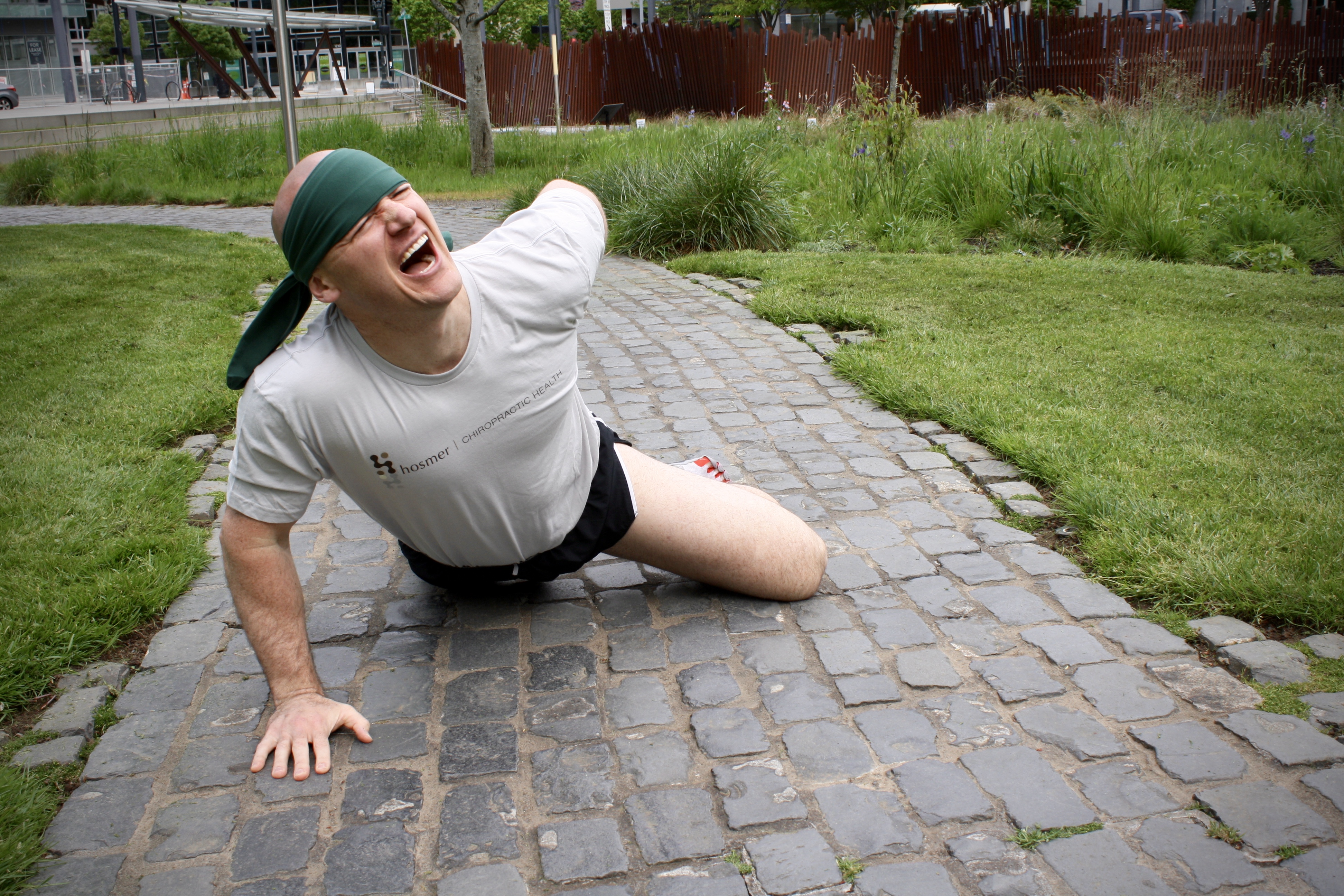
Stop running if you’re in pain. Seriously.
One of the most common sentences we hear when working with a patient in pain is:
“My (insert body part) hurts when I (insert activity)”.
My back hurts when I run.
My shoulder hurts when I lift weights overhead.
My right elbow hurts when I’m giving kittens belly rubs while practicing ninja flips.
Whatever the above-combination may be, my advice is usually the same.
Stop doing that.
We don’t mean forever, but just for now. While this applies to most cases we see, for some reason the endurance athletes, specifically runners, seem to think that the world may come to an end if they have to miss a few days or weeks of training. As athletes, we know exercise can be a crucial outlet for many people and it’s difficult to break activity habits when it’s something you do every day. However, the reality is if you have an injury, it will only heal with a proper recovery period and the right care.
Of course, our goal here at Hosmer is to get you back to 100% as soon as possible. In a lot of cases, most exercises and daily activities can still be done in a limited capacity as you’re healing, but in some cases, the best thing you can do is rest.
So why should you stop running or the aggravating activity? Here are a few reasons:
You need time to heal
Running inflicts significant stress on your body—each footfall can exert up to 2.5 times your body weight. For instance, a 200-pound person may endure 500 pounds of force per step, akin to jumping rope 5,000 times on one leg. This cumulative impact worsens with improper mechanics and weight, necessitating proper healing time for injuries. Here are typical recovery periods:
- Minor Muscle Tear: 2-4 weeks
- Muscle Strain/Sprain: 4-8+ weeks
- Shin Splints: Highly variable, 2-6+ weeks
- Stress Fracture: 8-12 weeks without running
- Tight Muscles: 2-4 weeks
- Tight Joints: Case by case
- Broken Bone: 8+ weeks
- Bulging Disc: 1-2+ years or longer
Respect your body’s limits and heal properly, whether from running, cycling, or lifting, to avoid prolonged setbacks.
I’ll lose all my progress
Taking a break from running or working out can evoke fears of losing physical conditioning. Studies reveal a modest decline in performance: a 4-14% drop in VO2 max after 4 weeks for aerobic activities, and 7-12% in strength after 8-12 weeks of inactivity. Unless you’re an elite athlete, this loss is manageable and recoverable upon resuming training.
However, the real challenge often lies beyond fitness. A brief hiatus can disrupt overall health routines. For instance, skipping a week due to a sore ankle might lead to dietary slip-ups like indulging in bagels or sugary drinks, compounded by stress and poor sleep. Maintaining healthy habits during recovery—like balanced nutrition, hydration, and managing stress—is crucial for faster healing, perhaps more so than when injury-free.
Use your rest time to improve skills and weaknesses
I must run or I’ll go crazy
No you won’t. Trust me, you won’t. If I were to give you ten million dollars with the one caveat that you couldn’t go running for a week, you could make it happen!
Find something else to do. In some cases you can still exercise, so maybe consider walking, going for a swim, lifting weights, boxing, pilates etc. Alternatives to running provide different movement patterns which will help you avoid further injury. If exercise is not in the cards for your recovery, enjoy your rest time! Relax, play with your kids, go see a movie, check out a museum, explore Pittock mansion, go streaking.
I’ve got a big race/event coming up
Unless this race is critical like the Olympics, I advise patients to reflect on whether to continue training or competing while in pain:
- Will your performance affect your financial stability or your family’s? If so, let’s discuss.
- Are you in a role like a first responder where physical ability is crucial for safety? If not, reconsider pushing through pain.
While personal and professional commitments matter, consider the impact on your recovery. If you’re a mechanic enduring wrist pain at work, we understand. But running through pain for a non-critical event like a Torchlight Run warrants careful consideration.
Looking at the big picture
In all seriousness, we understand that no one lives in a bubble and that it’s impossible for anyone to completely isolate themselves from any and all potential situations that could aggravate an existing injury. We’re just saying that sometimes it’s important to step back and look at things from a big picture perspective.
Yes, it’s annoying to not be able to do something you love for even a short period of time, but a week or two of rest now could save you from months and possibly years of recurring and nagging injuries.
Additionally, please know we’re not going to leave you high and dry with nothing to do. There is a plethora of other physical activities you can do in the interim to replace your daily run or weight workout. Just ask, and we’ll set you up with a rehabilitation program.
You’d be amazed at how fast you can recover with a little rest and by ACTUALLY DOING your rehab exercises and stretches.
Not in pain or looking to prevent running pain when you’re ready to get back into it? Check out our blog on how to properly transition into a running routine.